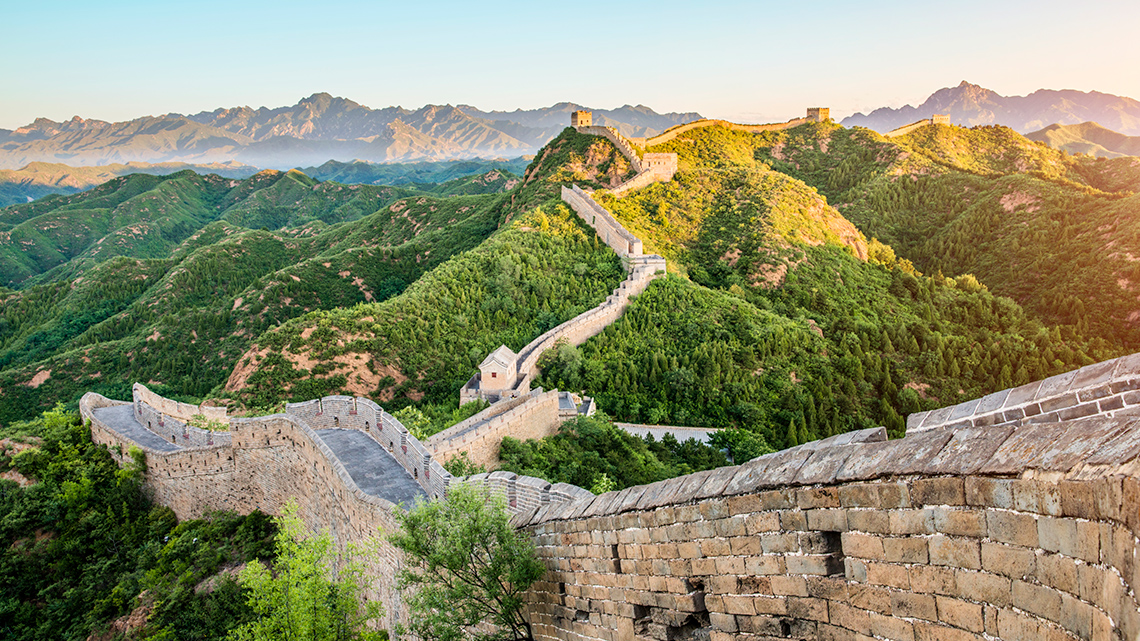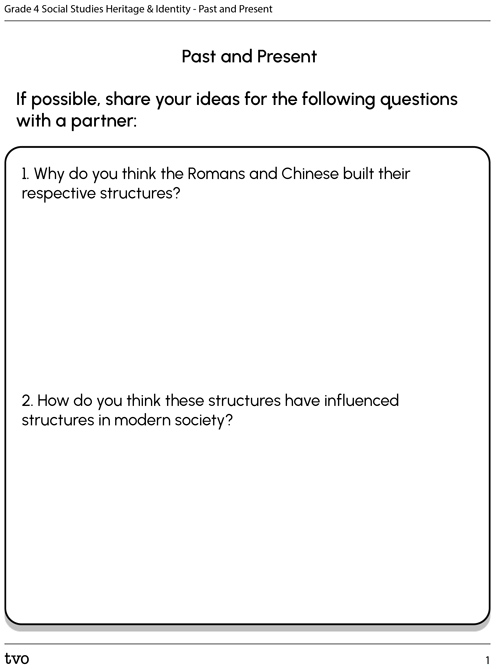Minds On
Past and present
Have you ever wondered who invented the technology and everyday items we use in the world today?
Let’s explore a few contributions made by early societies:
Student Success
Think-Pair-Share
After exploring the contributions made by early societies, respond to the following questions:
- Why do you think the Romans and Chinese built these structures?
- How do you think these structures have influenced structures in modern society?
Complete the Past and Present activity in your notebook, in the following fillable and printable documents, or in a method of your choice.
Note to teachers: See your teacher guide for collaboration tools, ideas and suggestions.
Action
Innovation
Throughout history, many cultures have contributed scientific and technological developments that have shaped the modern world.
Let’s explore the following ancient societies and learn about their innovations.

This is a world map with arrows pointing at Canada, Italy, Egypt, Ethiopia, and China. On the left side of the map is North America, with an arrow pointing at Canada, which borders the Pacific, Arctic, and the Atlantic Ocean. Now towards the east, across the Atlantic Ocean, is Europe. There is an arrow pointing towards Italy, which is located on the coast of the Mediterranean Sea in Europe. South of Europe is Africa, where an arrow is pointing towards Egypt. Egypt is found in the most north-east corner of Africa, also along the coast of the Mediterranean Sea. South of Egypt is Ethiopia on the eastern side of Africa. Towards the east of the map is Asia, with an arrow pointing to China, which is the southern half of the continent.
Romans
Press the following tabs to learn more about this society and their innovations.
The Colosseum was the largest building ever constructed in the ancient world. It changed the way entertainment was enjoyed, as it brought huge crowds together in one space and featured games, like gladiator and wild animal fights.
Concrete has become the main material used in the construction of buildings ever since, and the Colosseum continues to influence stadium and arena designs in the modern world.

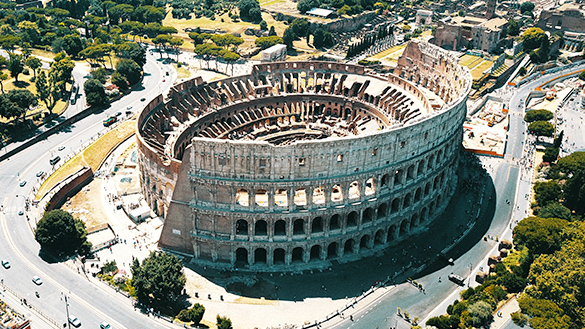

After exploring the Colosseum, brainstorm any questions you may have about the Colosseum.
For example: How many people could the structure hold?
Record your questions in a notebook or a method of your choice.
Egyptians
Press the following tabs to learn more about this society and their innovations.
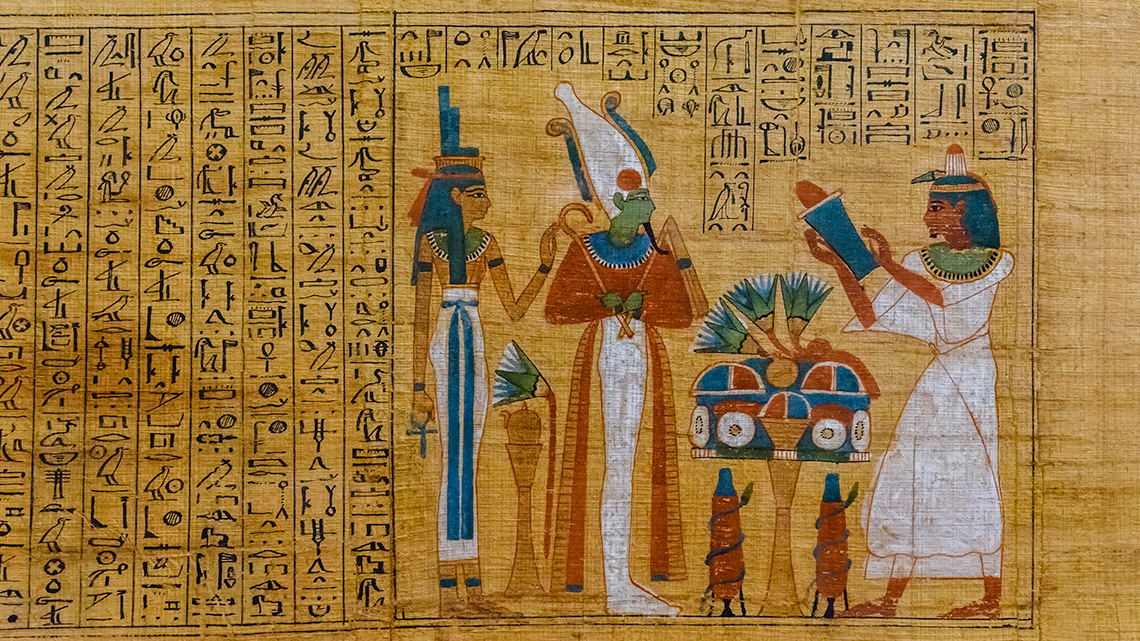

After examining the papyrus, brainstorm any questions you may have about the invention of paper.
For example:
- Was there more than one culture that developed paper?
- Were there different types of paper?
Record your questions in a notebook or a method of your choice.
Ancient Chinese
Press the following tabs to learn more about this society and their innovations.
The ancient Chinese invented paper using pulp (third to second century BCE) and woodblock printing in the ninth century. Like the Egyptians, they developed a writing system early on.
This meant that they could reproduce writings, scrolls, and books faster and more efficiently using woodblock printing.
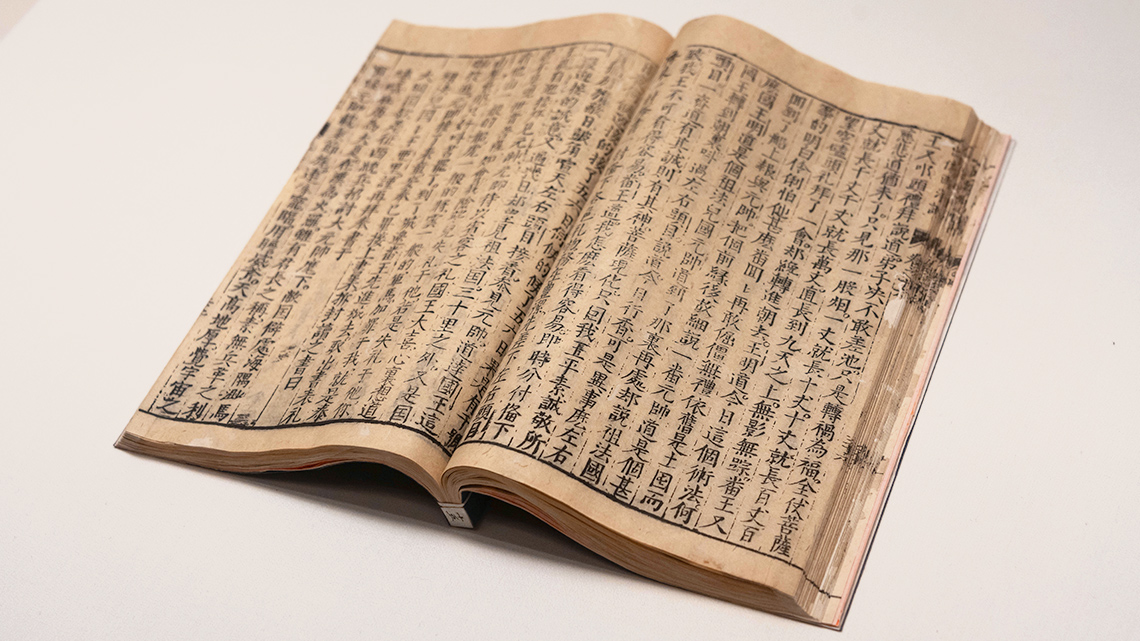

After examining the print, brainstorm any questions you may have about woodblock printing.
For example: How many characters (or letters) could be placed on each wood block?
Record your questions in a notebook or a method of your choice.
Inuit
Press the following tabs to learn more about this Indigenous society and their innovations.
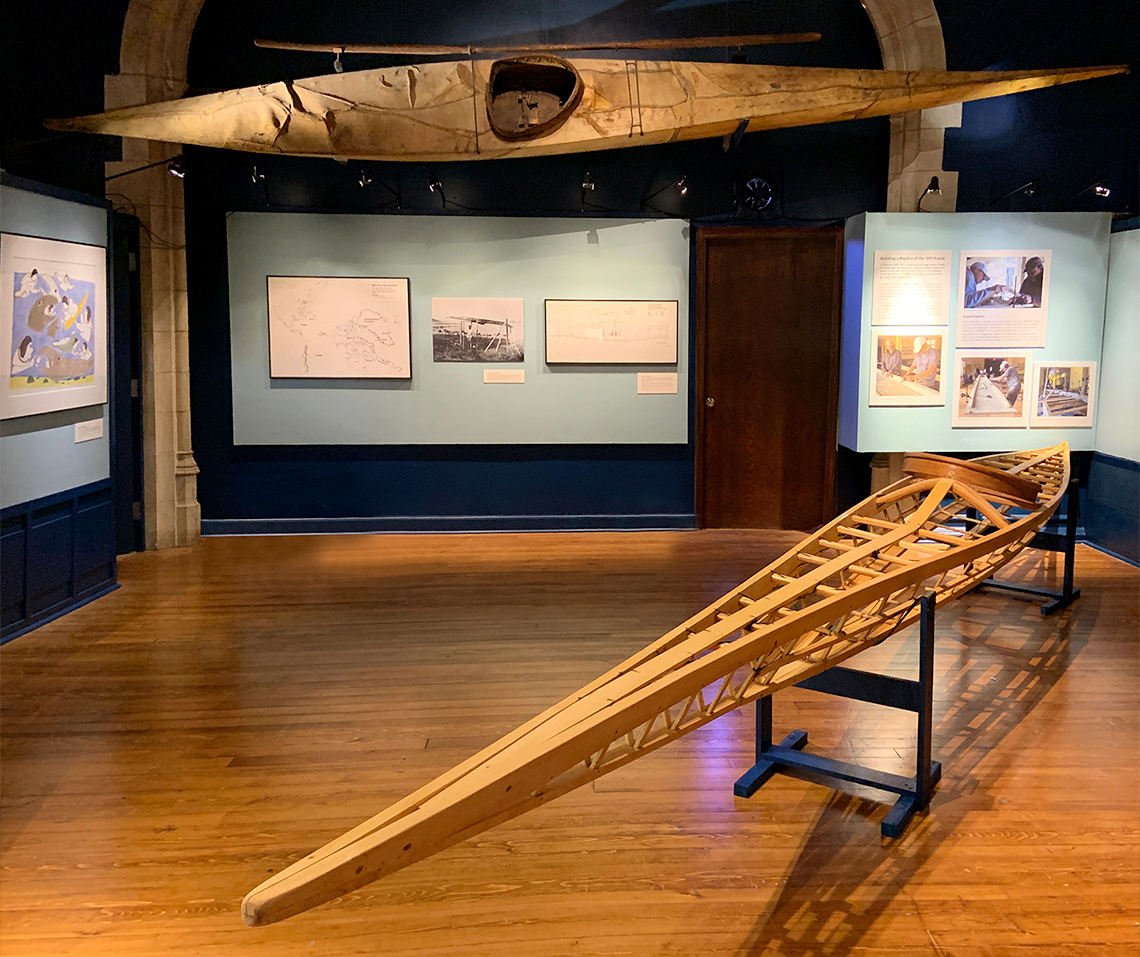

After exploring the kayak, brainstorm any questions you may have about it.
For example: How is the kayak different from other watercrafts?
Record your questions in a notebook or a method of your choice.
Eastern Woodlands First Nations
Press the following tabs to learn more about this Indigenous society and their innovations.
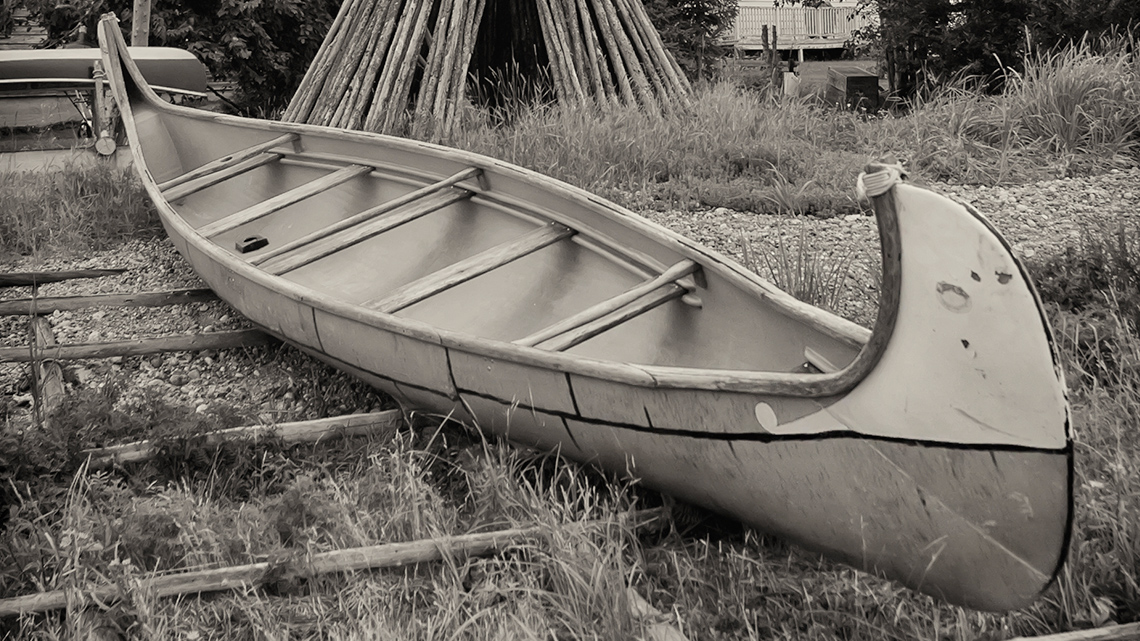

After exploring the birch bark canoe, brainstorm any questions you may have about it.
For example: How many people could it hold?
Record your questions in a notebook or a method of your choice.
Kingdom of Aksum
Press the following tabs to learn more about this society and their innovations.
The ancient Aksum Empire in Ethiopia developed its own coins, as it traded with merchants from Rome, the Middle East, India, and as far away as China.
Aksum coins were made from copper, and later gold. They date back to the fourth century and include engravings of characters with messages and a person in the middle of the coin.
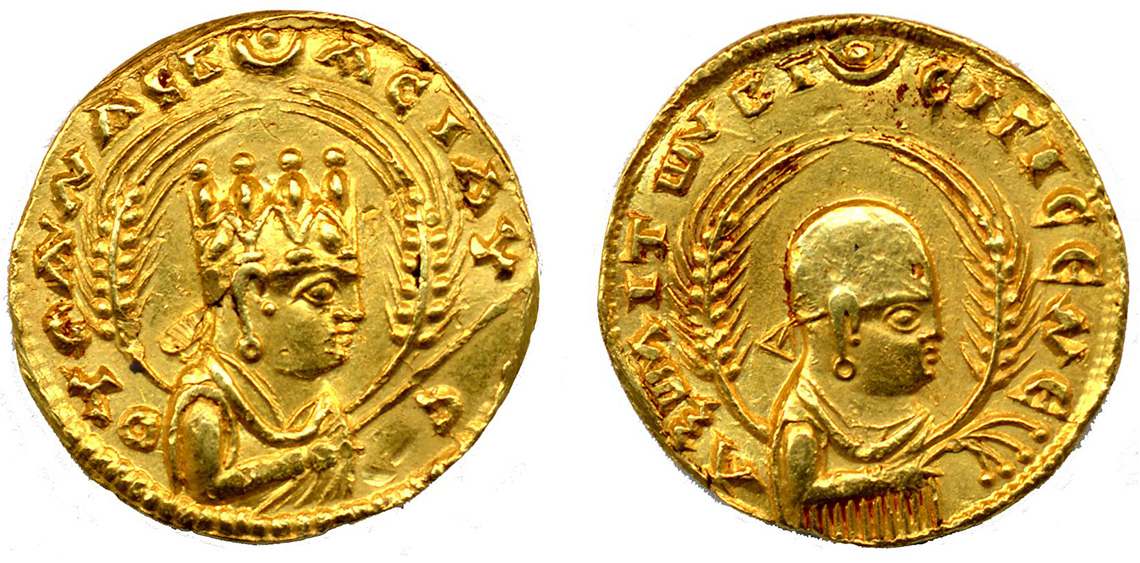

After examining the coins, brainstorm any questions you may have about them.
For example: How much was each coin worth?
Record your questions in a notebook or a method of your choice.
Technology: Past and present
Choose one of the following questions to respond to:
- What is one technology that surprised you? Why?
- Choose one technology and explain why it is still significant today.
- Choose one technology that you can make a personal or world connection to. What is your connection?
Record your ideas in a notebook or a method of your choice.
Consolidation
Mix and match
Match these early technologies to today’s technology using this activity. For each modern-day technology, select the corresponding early innovation.
Present and future
Brainstorm
What do you think?
Reflect on the following questions:
- How has modern technology been affected by earlier inventions?
- What recent inventions do you think will affect future societies?
Press Let's Check! to explore a hint.
For example:
- Technology usually builds on earlier technology.
- Think about the impact of solar and wind power.
Complete the Present and Future Technologies activity in your notebook, in the following fillable and printable documents, or in a method of your choice.
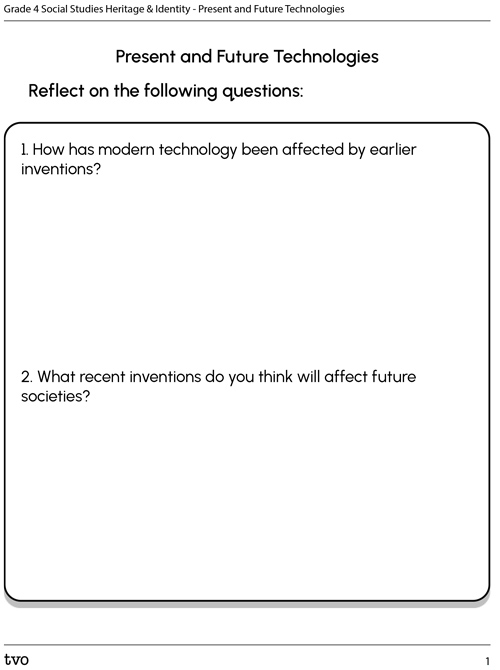
Press the Activity button to access the Present and Future Technologies.
Activity(Opens in a new tab)Reflection
As you read through these descriptions, which sentence best describes how you are feeling about your understanding of this learning activity? Press the button that is beside this sentence.
I feel...
Now, record your ideas using a voice recorder, speech-to-text, or writing tool.

